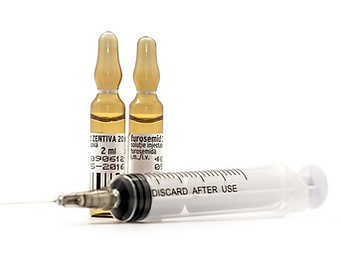What Are Anti-virals?
If you have had a cold or the flu, you have
had a viral infection. The cold or flu made you
miserable, but after a while, you got better.
Most virus infections run a course of time,
depending on the type of virus, and the person
gets better. But, some viruses can be deadly and if the patient survives, the infection can leave him with severe health complications. Anti-viral medication can lessen the severity of the symptoms and shorten the time it takes to get better.
But, how do they work to do this? Why don’t we have anti-viral medicines for all viral diseases?
Read more to find out about these important medicines.
Learning Objectives
By the end of this lesson, students should be able to:
-
Explain how viruses attack body cells to cause disease.
-
Describe how anti-viral medicines fight viral diseases.
-
Explain why there are not anti-viral medicines for every viral disease.
Vocabulary
anti-viral medicine—a type of medicine used to treat viral infections by inhibiting viral development; anti-viral medications do not kill the virus.
disease—a condition in which the body cannot function normally due to infection by a pathogen.
immune system— the body system that produces defenses against pathogens.
infection— a condition in which a pathogen invades the body and begins to multiply.
pathogen—any organism that causes disease.
replication—duplication.
virus—an infectious agent consisting of genetic material (DNA or RNA) and a protein coat.
viral load—the quantity of virus in a body fluid such as blood or sputum.
How Do Anti-Viral Medicines Fight Viruses?
You may have already read the “What Are Viruses?” lesson in this module. If so, you found out how viruses multiply inside a human cell to cause disease. An important part of how they cause disease is how they multiply or replicate.
The replication process has 5 steps:
1) Attach: The virus attaches to a host cell. Any cell will do as long as the virus can attach to specific chemical groups on the cell surface.
2) Invade: The entire virus or just its genetic material penetrates the cell and enters the cell’s cytoplasm (gel-like substance inside the cell membrane).
3) Copy: The viral DNA or RNA uses the host cell to produce thousands of copies of viral genetic code.
4) Assemble: The new viral genetic code and proteins form new viral particles.
5) Release: New viral particles are released from the cell, the cell dies, and the new particles go on to infect other healthy host cells.
Anti-virals that interfere with any step in the replication process make it less likely that the disease will develop or that the disease will be as severe. Viruses need a certain number of viruses in the body (call the viral load) for disease to develop Slowing down the replication process allows the body’s own immune system to neutralize the virus.
So, why don’t we have anti-viral medications for every viral disease?
Viruses are intracellular (inside the cell) parasites. They cannot multiply outside a living cell. It is difficult to find drugs that interfere with viral replication that do not also harm the host’s (the person with the virus) cells.
Another problem with developing anti-viral medicines is the way viruses mutate to form new virus characteristics. Anti-viral medicines often do not work as well on these “new” viruses.
Fast Fact: When you take an antibiotic for a bacterial infection, the medicine actually destroys the bacteria that is infecting you. Not so with anti-viral medicines.
Unlike other medicines that kill a pathogen (disease-causing organism), anti-virals do not kill viruses, but instead interfere with the replication process and inhibits the formation of new viral particles.
New anti-viral medicines being developed try to
identify viral proteins or parts of proteins that can be
disabled to stop the disease spread in the body.
Scientists try to find a protein made by the virus but
not by the host’s body so the host is not damaged.
They also look for proteins that are made by different
strains of the virus so the drug will be more effective
against different versions of the virus.
Image: Colorized electron microscope image of a coronavirus and human cell.Credit: (NIAID) https://phil.cdc.gov/Details.aspx?pid=18115
©Wheeling University, 2023. All rights reserved.

